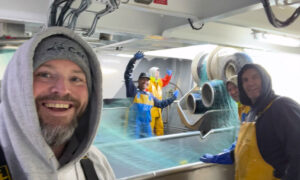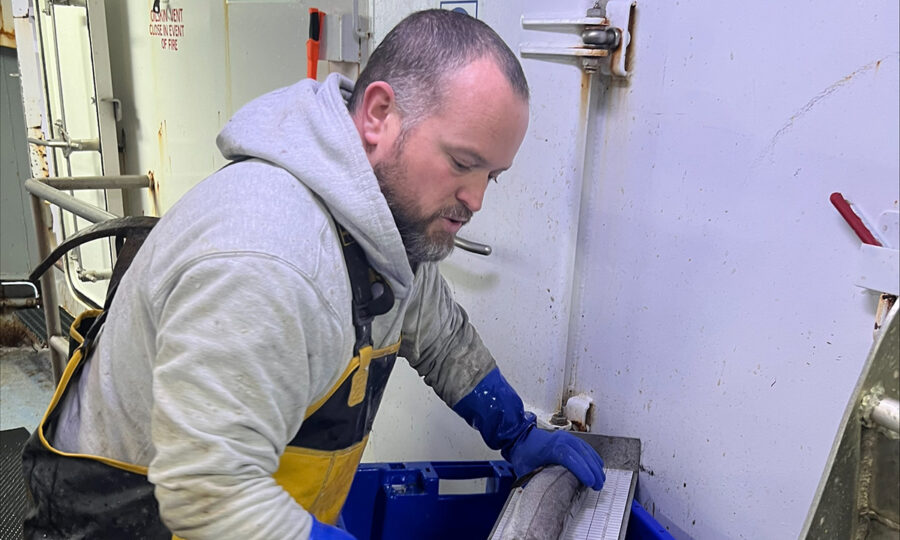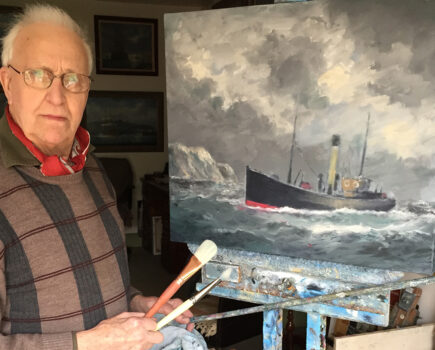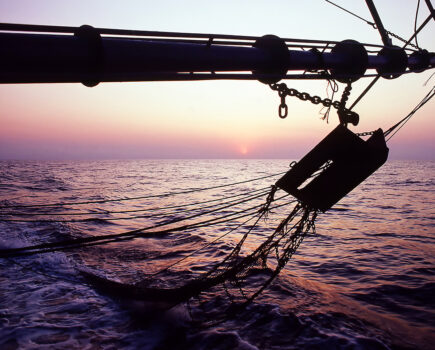Share a day in the life of a Cefas fisheries scientist
“I had a late night,” said Cefas offshore fisheries observer Rich Buck, at the beginning of our interview. “I was sampling on Brixham market last night. I was there from about midnight to around 4.30am.”
However, as soon as we started talking fish and fisheries, any hint of tiredness disappeared from his voice, replaced by evident passion for the subject.
“I have always been a keen recreational angler. I had two fishing tackle shops down in Cornwall, and have been involved with sea fishing from a recreational point of view for a substantial part of my life,” he said.
As the economy began to slow, Rich left retail for a position with the civil service – which ultimately led to his role with Cefas.
“I wasn’t actually looking for another job, but then the fisheries observer role came up. It is one of those jobs where you look at it and think: ‘Hang on a minute, that is written for me.’
“They wanted fish identification experience, which I had through the angling clubs, and people who had spent time on boats. I also already had a background in the civil service.”
Rich’s application was successful, and in February last year he was officially appointed to Cefas’ Applied Fisheries Science and Technology (AFST) team as an offshore fisheries observer. “We cover the whole of the South West, from west of Poole in Dorset round to North Devon.”
Like Scarborough-based James Lamb, Rich, who works out of Cefas’ Plymouth office, carries out various types of sampling: offshore on commercial fishing vessels, onshore on fishmarkets and at merchants’, and co-sampling, the last of which allows vessels to land discards to be sampled shoreside. All three methods are vital to Cefas for informing stock assessments and providing evidence to support scientific advice.
“The skippers and the crew understand that, amongst many other uses, essentially what we do is gather data that contributes to stock assessments,” explained Rich. “The more data we gather, the more robust the assessments are going to be, and the more robust the assessments are, the more confidence fisheries managers will have in setting fishing opportunities at sustainable levels.”

Rich, pictured here with the crew of the Amanda of Ladram, says that his aim is to slot into the onboard production line with no disruption whatsoever. “I intercept the fish on its way to the gutting pound, and then once I’ve measured it, I pass it down the line.”
Rich’s role encompasses a range of different sampling methods and techniques, which can vary depending on the type of fishery.
For example, in the brown crab fishery, only landings are measured. “The primary aim of the combined offshore and onshore programme is to be able to estimate the size and age compositions of the total removals – landings plus dead discards – from a fishery or stock.
“As the vast majority of the discarded crabs survive, there is less value in sampling potters at sea.”
Rich says that although he and his colleague James Lamb might not be working in the same region, they very much see themselves as part of the same team. “We do sometimes meet up. We can be working on scientific projects that may involve either the team James works in coming down to us, or us going up to them.
“James was down in the South West just before Christmas last year. We also have group meetings. We are all the same team – the AFST.”
Despite the late night – or, depending on your perspective, early morning – preceding our interview, Rich says he doesn’t view the irregular hours that the job brings as a negative.
“I like how varied the role is. I can be on a day-boat going bass fishing one day, and then I can be going out on a 10-day netting trip, 100 miles out on the Atlantic Shelf, the week after.
“The day after I could be doing a shellfish landing at 3am at Salcombe, the day after that I could be working from home, entering catch data in databases, or arranging my next trip – so it is about having the flexibility to be able to go and do things at short notice,” he said.
“To describe a typical day is impossible for me. There is not really a typical anything in this role.”
This story was taken from the latest issue of Fishing News. For more up-to-date and in-depth reports on the UK and Irish commercial fishing sector, subscribe to Fishing News here or buy the latest single issue for just £3.30 here.
Sign up to Fishing News’ FREE e-newsletter here.








